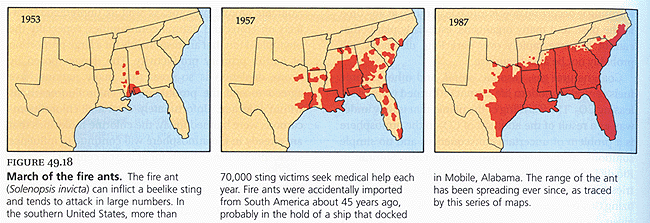
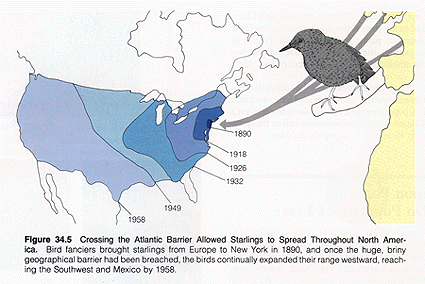
Species introductions:


The Niche:
The niche is the multidimensional resource space that a particular population occupies.
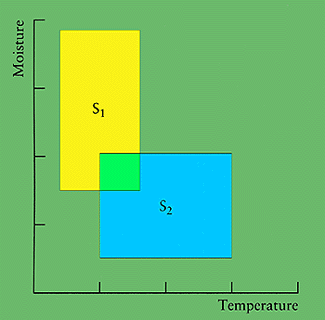
Population interactions
1. Competition
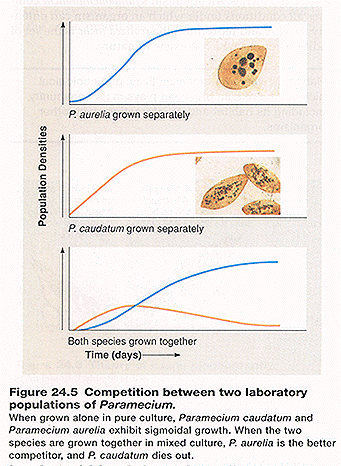
The effect of competition between two species of Paramecium. Competition for limitid resources can lead to competitive exclusion (above) or ...
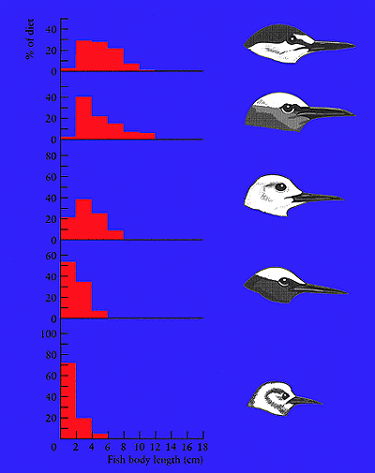
resource partitioning to avoid or decrease the level of competition such as among these five species of terns on the Christmas Islands.
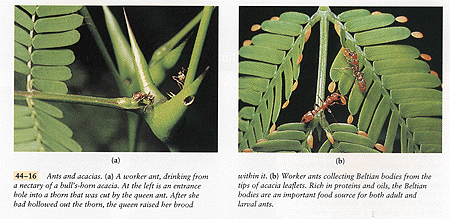
Mutualistic interaction between ants and an acacia species (a tree) in the tropics. The ants protect the host tree, while the tree provides the ants with nutrient rich food (the yellow bodies on the tip of leaflets).
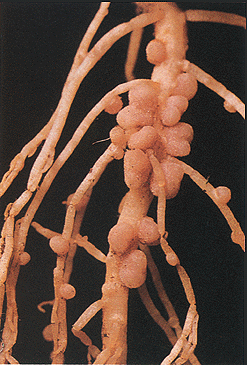
Mutualism between legumes (Fabaceae) and bacteria (Rhizobium spp.) living in the nodules on the roots.
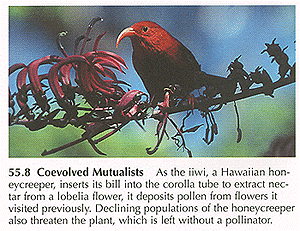
This Hawaiian honeycreeper, called i'iwi, pollinates the flowers if the tree, while the tree provides it with nutrient rich nectar.
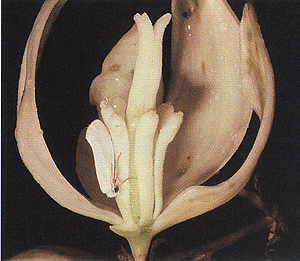
This little moth is the exclusive pollinator of the yuccas. Its larvae grow and feed on the tissues of the developing yucca fruits. Neither can exist without the other.
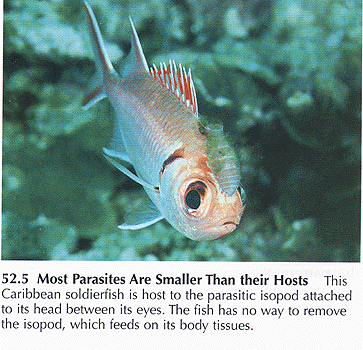
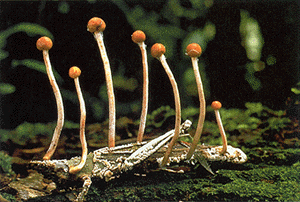
A parasitic mold killing a locust.
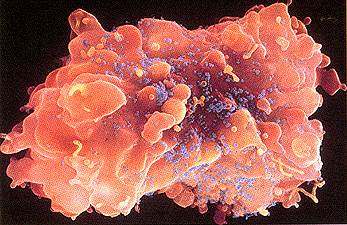
Although not living, the HIV virus acts much like other parasites when attacking and destroying its host, the helper T-cells.
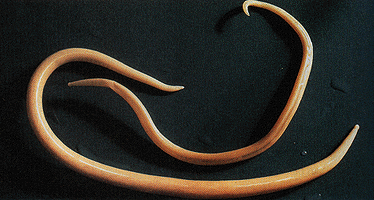
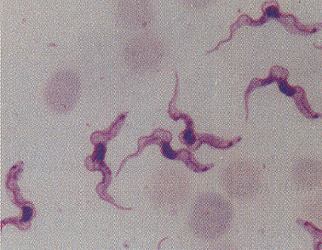 | 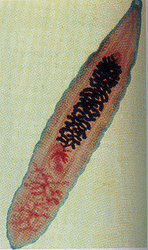 |
Various endoparasites of humans. Top: The roundworm Ascaris lumbricoides lives in the intestinal cavities of humans and some other animals. Bottom left: The protozoan Tripanosoma gambiense causes the African sleeping sickness; right, the human liver fluke, a flatworm (Clonorchis sinensis).
parasitic wasps
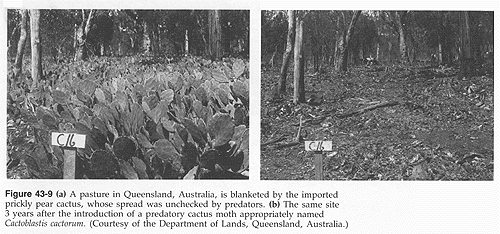
Two pictures taken at an experimental site in Australia where Cactoblastis larvae were released to control the introduced prickly pear cactus.
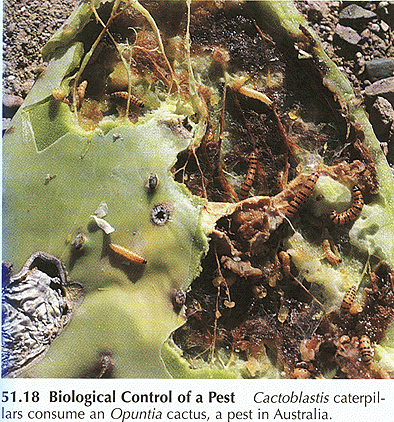
Larvae of Cactoblastis cactorum, a moth, feeding on the fleshy leaves of the prickly pear cactus.
Populations
Population growth

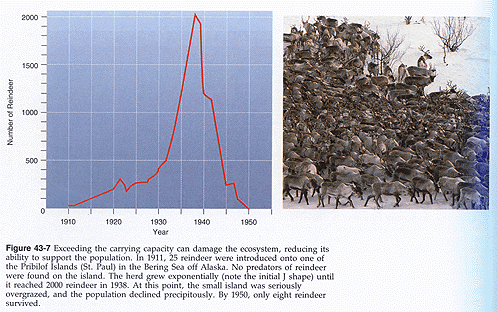
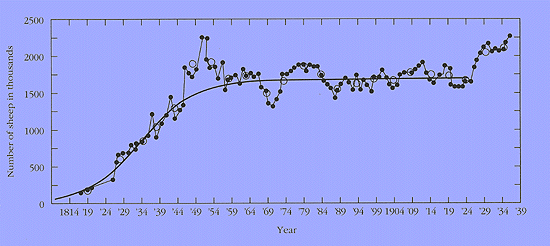
Population growth of sheep introduced in Tasmania.
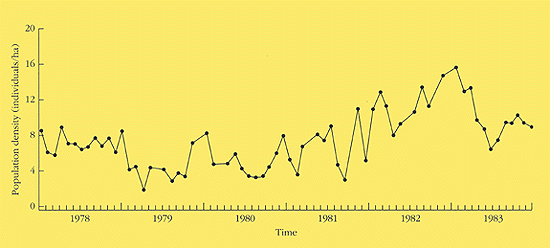
Changes in population size in the desert kangaroo rat Dipodomys merriami.
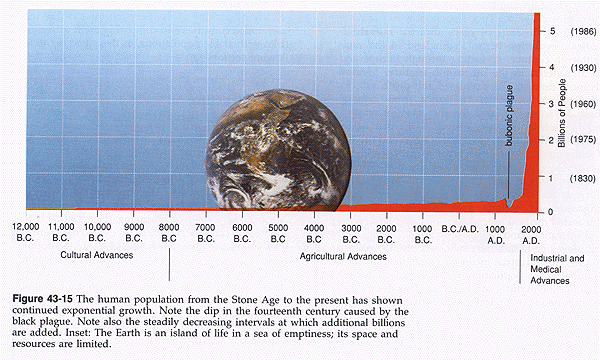
Density-dependent regulation of growth:
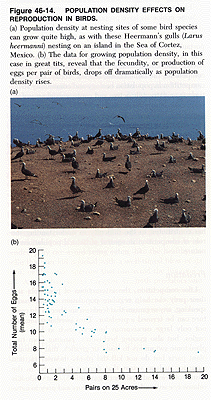 | 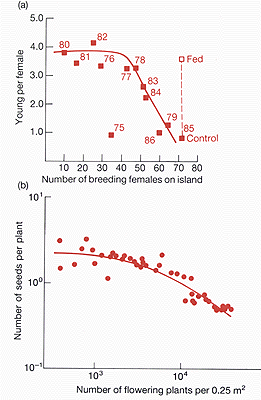 |
|
Top: Density-dependent fecundity in the song sparrow, Melospiza melodia on Mandarte Island, British Columbia, Canada between the years of 1975-1986. In 1985, supplementary food provisioning increased the fecundity suggesting that the key factor was food availability. Bottom: Fecundity change in Vulpia fasciculata, an annual plant inhabiting sand dunes. |
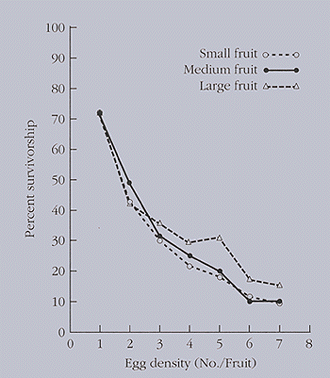 | 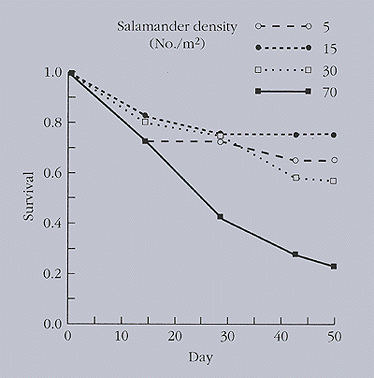 |
| Density dependent survivorship in the apple-maggot fly, Rhagoletis pomonella. | Density-dependent survivorship in the spotted salamander. |
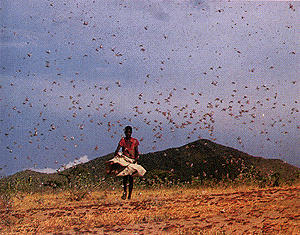
Density-dependent emigration in the migratory locust Locusta migratoria in North Africa. Large population sizes result in outbreaks of migrations that, in the past, could even reach large parts of Europe.
NYTimes.com Article: Storm in Mexico Devastates Monarch Butterfly Colonies
The Human Population
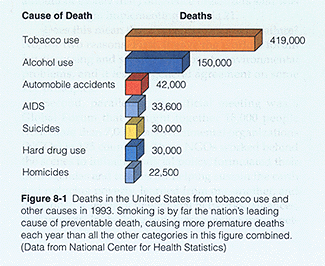

fertility and education
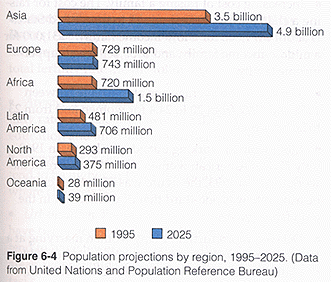
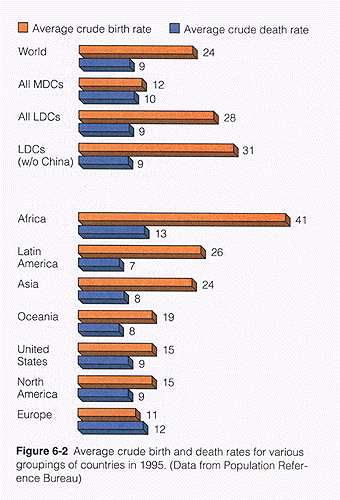
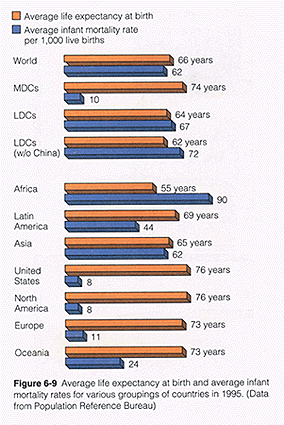
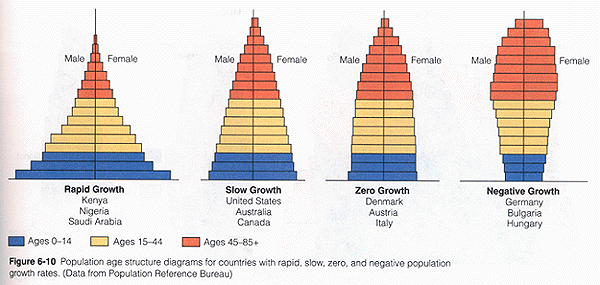
| ||||
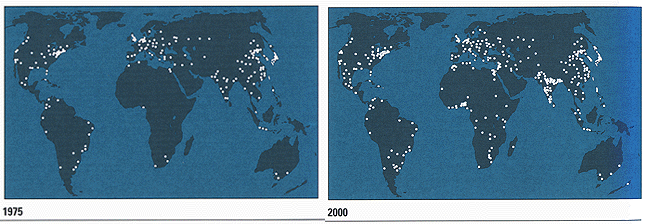 |
The number of large cities with more than one million inhabitants has increased rapidly.

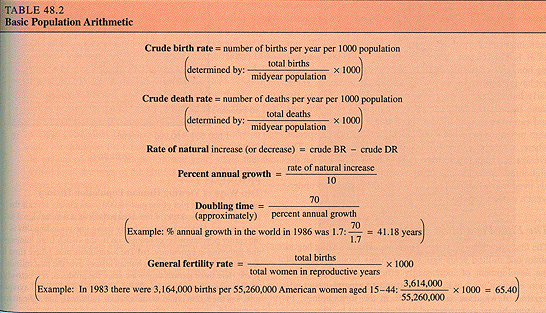
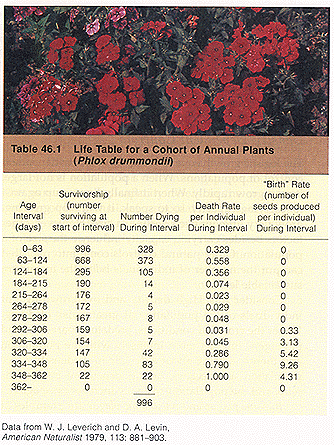
age-specific survivorship(lx): the proportion of individuals in a cohort that survive from birth to age x.
age-specific fecundity (mx): the average number of female offspring a female has at age x.
age specific life-expectancy (ex): the average time individuals at age x can expect to live in the future.
net reproductive rate (Ro): the average number of female offspring per females during their lifetime.
generation time:the average time that passes between when a female was born and when her children were born.
How to calculate?
age-specific survivorship(lx): follow the definition
age-specific fecundity (mx): is usually given
age specific life-expectancy (ex):
eo=(lo+l1+l2+...+ln) / lo
e5=(l5+l6+...+ln) / l5
net reproductive rate (Ro):
Ro= the SUM of lxmx for all age-groups.
survivorship curves
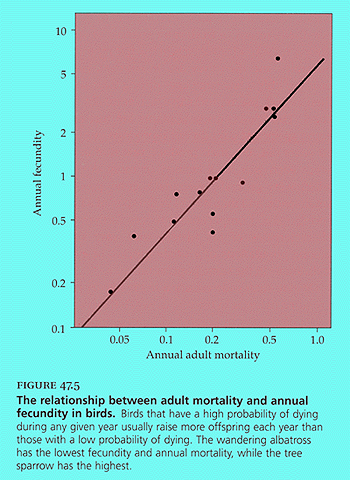
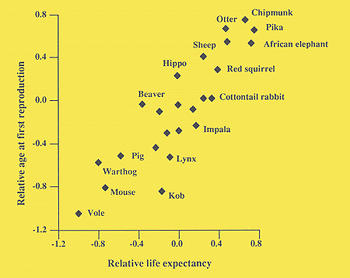
r and K-selected species
for characteristics see early and late successional species.